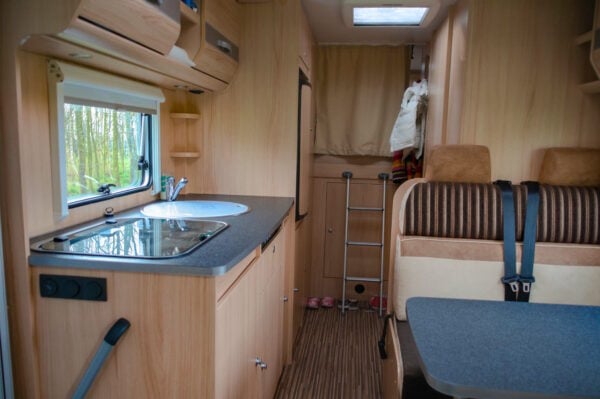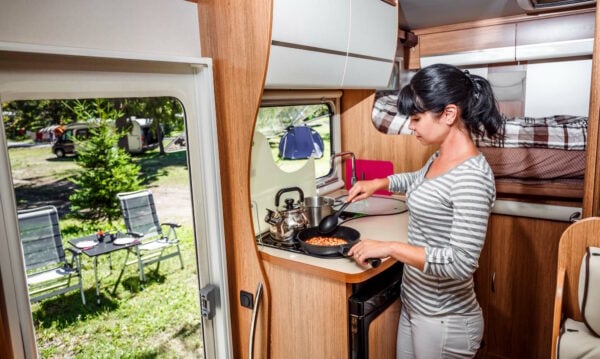A water source is critical for your freedom to roam the countryside in a campervan. The more water you have, the longer you can be in the wilderness without having to find a source.
You can purchase generic kits for campervan plumbing and it is possible to install some or all of it yourself (although, for a professional job that’s less likely to have issues, it is best to call a plumber, even if just to double-check your own work). The internet is littered with stories from vanlifers who have flooded their van (sometimes with some nasty consequences).
Whether you are about to convert a van into a motorhome, or you are upgrading your motorhome’s small tank to something larger, you’ll need to think about fresh, grey and blackwater.

Components
It all starts with a fresh water tank to hold the water in your campervan. This will have a point where you can fill it, an outlet for the appliances, and a tap where you can drain it, plus there’ll be a vent to let air in (otherwise you’re creating a vacuum when you use the water).
The most basic use of this is putting a tap on the tank and using it as a drinking water source. For these purposes, a 5-10-litre tank is large enough.
A medium-sized supply is 40-50 litres (you will most likely use 2 tanks). If you want to have a shower, then you’ll need 100 litres or more, plus almost as much again for the greywater tank.
Any water you use (except for that in a toilet) must drain out of a drain pipe into a greywater tank.
From the fresh water tank you’ll have a pipe (usually blue), and to the greywater tank you’ll have a pipe that’s usually grey – this way you don’t get them mixed up.
If you want heated water, then you’ll need an inverter and a heater that will produce enough power to heat the water. If you are installing larger water tanks, you may want to upgrade your heater so that you can run a shower.
Where are the tanks installed?
You can install the tanks inside the van or underslung. Underslung tanks are more complex and need to be protected from damage, plus they are likely to freeze if you’re using your van in winter. Tanks in the van are easier to plumb in, but take up valuable space. Also, bear in mind that the location of tanks (particularly if you are using 100 litres or more) will start to affect how the van handles, and you need to consider that sloshing water has some momentum behind it, therefore the tanks must be installed securely.
Your grey water tank holds runoff from the sink and shower, while a blackwater tank holds waste from a toilet (unless you are using a fully self-contained chemical toilet [recommended]).
A greywater tank should have an access hatch so that it can be cleaned.
All tanks should be installed as low as possible to maintain stability. For weight distribution, placing the tank ahead of the rear axle is ideal.
Once you’ve installed new tanks, what do you need to consider when driving?
If you are increasing from a 20-litre tank to 120 litres, you’ll add over 100kg to your payload (the extra 100 litres is 100kg, but there’s also the extra weight of the tanks and fittings). If you haven’t emptied your greywater tank, then you’ll be carrying even more. It’s worth considering an extra 1-2PSI of air in your tyres.
Extra weight also means your vehicle will take longer to stop, and it will accumulate more heat in the brakes (watch out for brake fade).
This extra weight gets you closer to the maximum vehicle payload.
Gasfitting

If you would like gas heating and appliances in your campervan, a qualified gasfitter is essential. Leaking gas is dangerous and can cause an explosion. Gas installations need a gas safety certificate. Appliances must be correctly installed. They will need flame failure protection and installation using solid copper sheathed pipe. Your vehicle must have a carbon monoxide detector and a gas detector.
So, to recap, you might be able to do the work yourself, but getting a plumber to ensure that all the water and gas fittings are correct and leakproof will give you peace of mind. Consider how the additional weight might affect how your vehicle handles.

